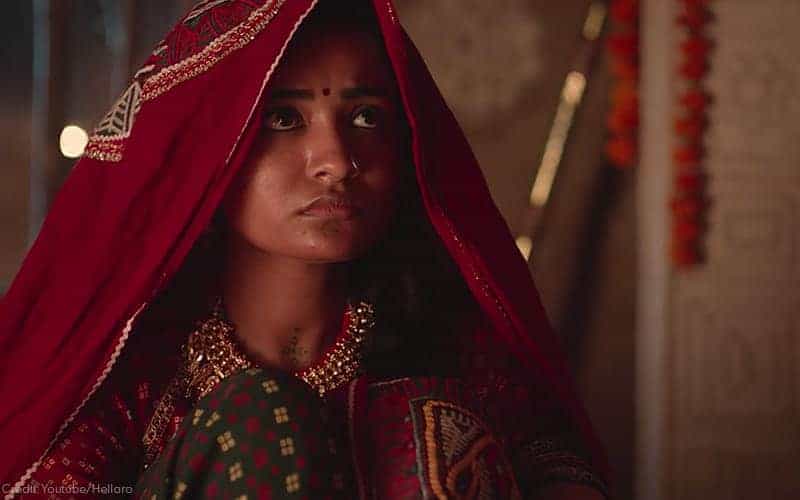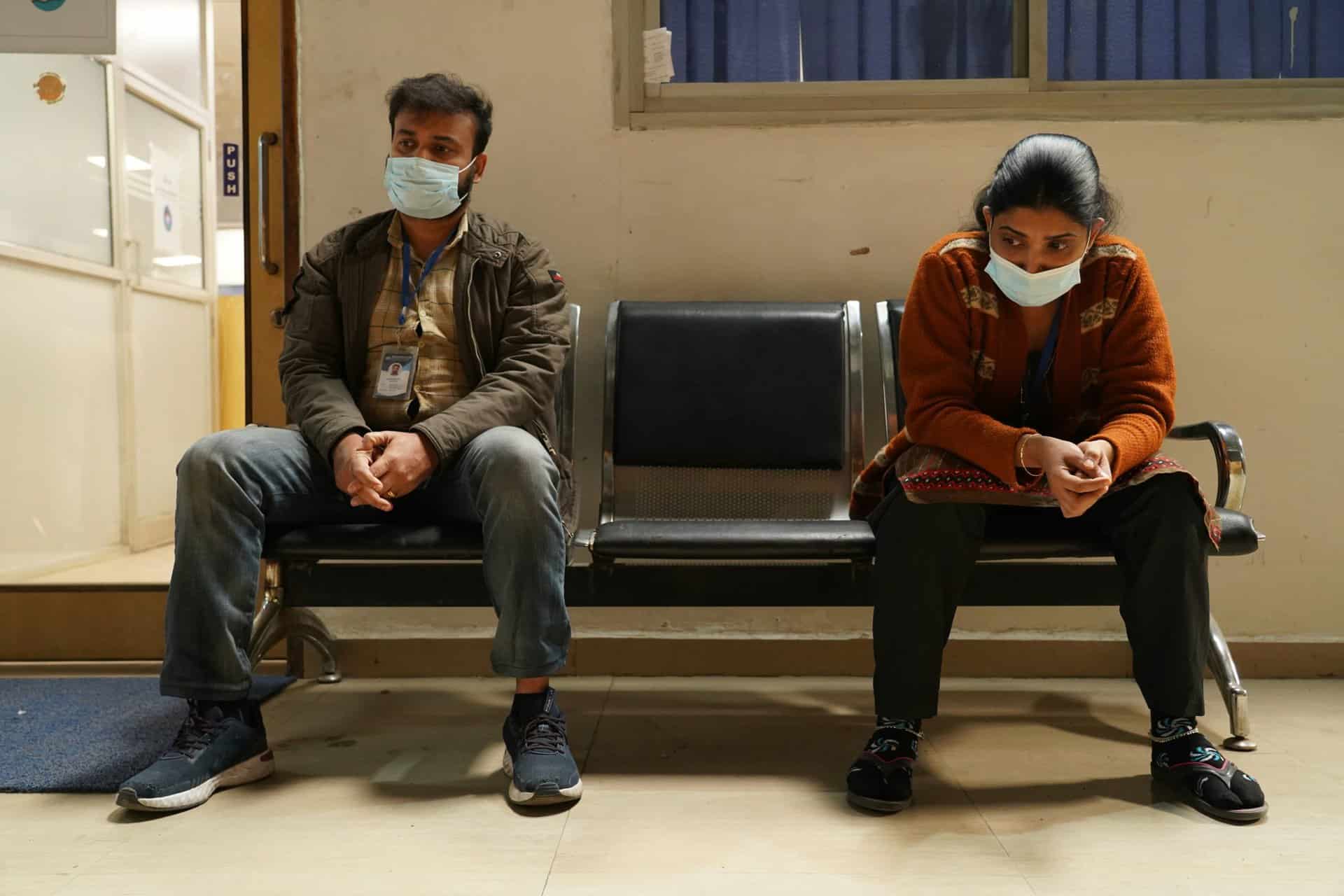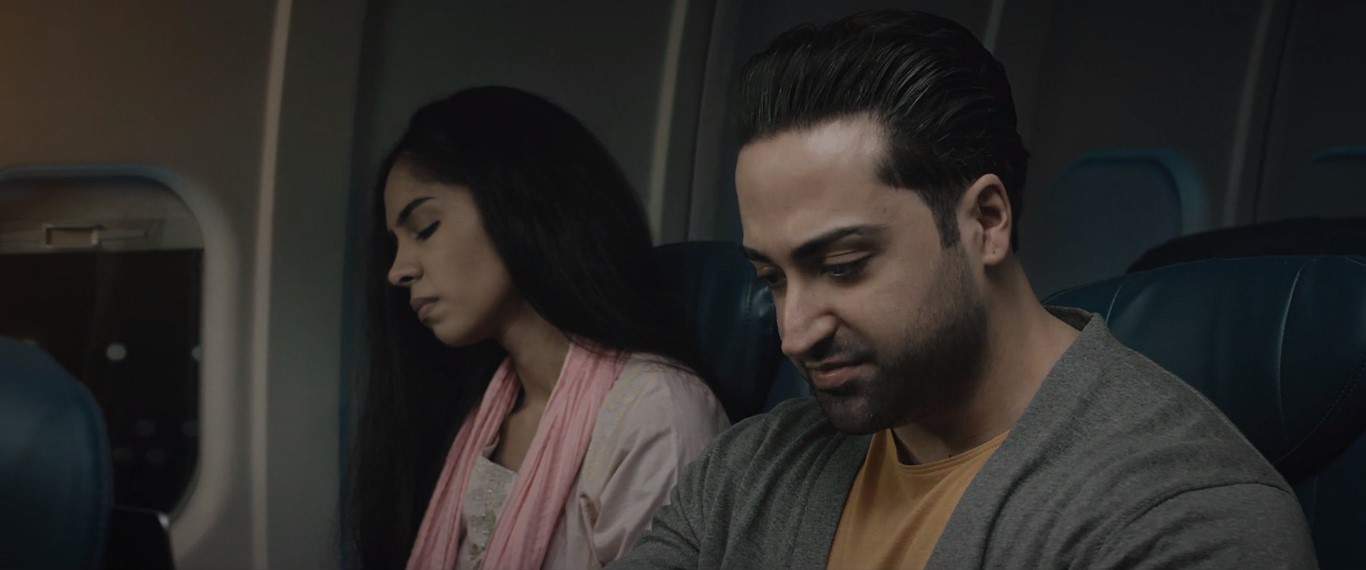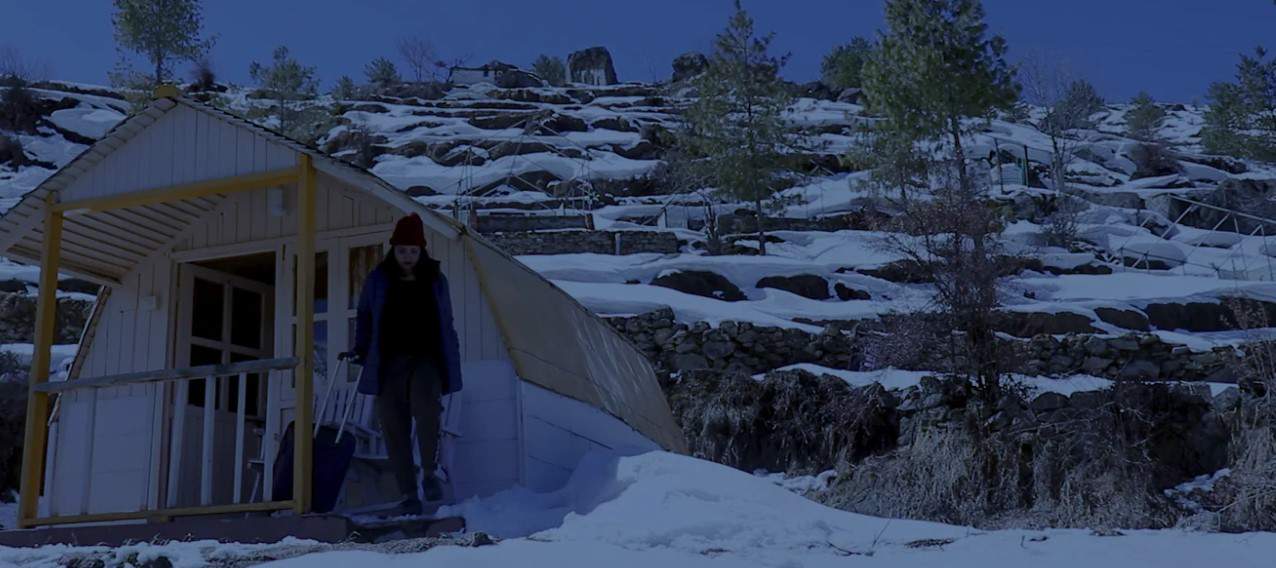Gujarati „Hellaro” juggles with components, which are often associated with Indian cinema. With its vibrant colours, impetuous choreography, traditional costumes and melodies, as well as drawing from Incredible India campaign-style folklore aesthetics, it may even seem a movie crafted especially for traditionalists and convention-oriented viewers, but it makes excellent use of these signature components. Moreover, the director Abishek Shah, contrary to the likes of Bhansali, knows the line behind which “stylish” turns into overwrought banal.
Although he tells his period story in a traditional way, his message is thoroughly contemporary. The film corresponds with the current trend of women-centered movies focused on emancipation, carefully looking into deep-rooted patriarchal patterns and despite its costume entourage, relates easily to the “here and now”.
All these heavy-weighted topics are served in a light (but not neglectful) manner. A few years back, Leena Yadav tried similar unpretentious strategy in “Parched”, but her movie, also portraying a group of village women searching for their independence and autonomy, failed to deliver flesh-and-blood characters and a poignant story. Additionally, it didn't find a balance between indie and popular cinema. Abishek Shah, for whom “Hellaro” is a directing and writing debut, avoided such traps.

“Hellaro” takes place in a remote village in Kutch, the Gujarati province. The hamlet consists of few clay-made huts decorated with traditional patterns on walls and covered with conical roofs. Behind the village, vast expanses of desert stretch, shaping an unfriendly landscape of windswept and sun-burnt sands. There is no subtitled hint on chronology, but we can easily guess the time of events thanks to Bhaglo, the open-minded man who watches films while traveling to the city, and then narrates those 70's classics to young males from the village (as we may expect, youngsters seem overly excited about Raj Kapoor's “Bobby”, imaging scantily-clad Dimple Kapadia and also evergreen classic, “Sholay”, is inevitably mentioned). The other cue is a radio announcement about Indira Gandhi declaring the state of emergency, which marks the exact date in 1975. Men comment on the mysterious “emergency”, mocking that these are the results of putting the reins of the country in women's hands, which tells us we'll be dealing with numb patriarchal order.
In the village, men rule overall aspects of life. Women are condemned to confinement of their own huts, to take care of children and chores. They are not supposed to ask questions and should serve their husbands who set all the rules and the rhythm of everyday life. Bhaglo is the women's only ally in the village, though he smartly disguises his small acts of protection. Whenever he pushes the elders to make a decision in ladies' favour, he manipulates them to think it's their own choice.

There is a long list of “don'ts” for women to follow. For example, they can't do embroidery work – a reminder of the former inhabitant, who dared to sell her handicrafts, providing herself a source of income, and as we know, money gives freedom. They can't fraternize too close with a young widow, adhering to cruel social superstitions. Finally, they can't perform the traditional dance garba as for an unknown reason it is reserved only for their husbands. Women do not challenge these rules, even if they know that in other places, females do join dancing males and the same obedience comes in other aspects of their lives.
However, the new bride in the settlement, Manjhri (Shradda Dangar), is made of different mettle. She starts challenging the old order and asks uncomfortable questions. For example, after listening to a cautionary and disturbing tale about a sinful, tradition-breaking couple, whose so-called formidable act “brought” drought to the village, Manhjri inquires whether the rain came after they were punished to appease the goddess. Manjhri's attitude is not well-received by her husband Arjan (Aarav Trivedi), who threats to keep her in line.
Everyday, the village women need to walk to a distant pond to fetch water. It is their only chance to leave the settlement, but it is tough to enjoy the opportunity to stroll when you are in the desert and need to carry heavy loads. One day something unexpected breaks the routine as the women find a thirsty mid-aged male, Mulji (Jayesh More) in the desert. They save his life, giving him water. He turns out to be a dholi, traditional drummer. The accidental meeting marks a starting point of an emancipation journey. Mulhji plays for the village ladies to dance. What may seem a trivial diversion, has a significant symbolic meaning. This is something the women initiate by themselves and for themselves: an act that gives them pleasure and a sense of freedom. While dancing, they can express themselves freely, whereas in every other aspect of life they restrain desires and emotions and they have to control themselves. Here, in the desert, social rules don't bind them and they don't feel the men's judging stares. Even Mujli himself doesn't watch the dancers as he plays with his back turned. The heroines, having tasted the freedom, won't be able to renounce it. It smartly reflects the mechanism of inevitable social change that can't be stopped, no matter how much the conservatives would wish for it to disappear. The dance revolution is nicely woven into the narrative and becomes an integral part of the sequence of events as well as inter-character tensions. The plentiful characters (the main cast of the ladies counts 12!) are well written and given enough space to seem real.
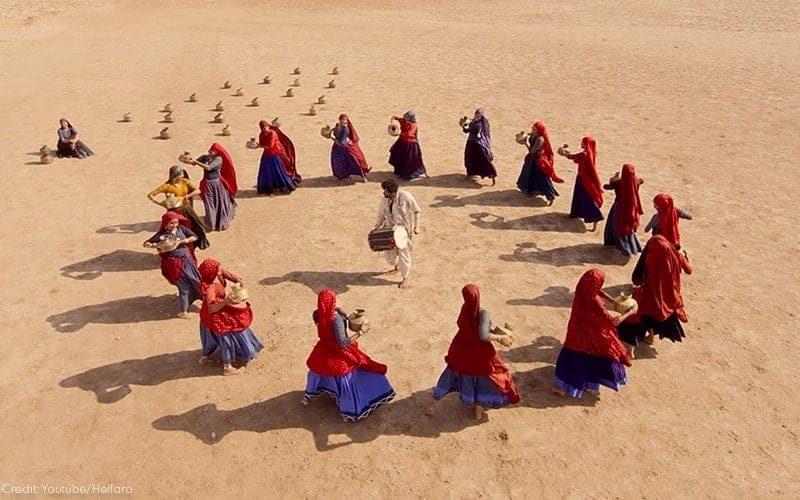
One of the important sources of oppression used by men in „Hellaro” is religion. The director doesn't undermine religion itself, and the village women understand faith with humane and emphatic intuition. What he exposes is the instrumental use of religious practices, blind beliefs, and superstitions. The villagers are worshiping the goddess, and everything that happens is thought to happen because of her. There hasn't been a single droplet of rain in three years – and it means that Mother is angry and they need to find the way to please her. Thus fear, shame, and guilt are common tools of manipulation. Accepting the order makes women unhappy and afraid of possible repercussions, like bringing calamity and misfortune upon their families. The term “sin” is often brought up, and the “sin” of one human being affects not only this particular person but casts a shadow upon the whole community. What an excellent means of social training and discipline! Women, whenever they break any of the imposed rules, react with fear that their ‘deed' would hurt someone. Their husbands, however, are in a constant state of complacency and feel moral superiority, although domestic violence, marital rape, and alcoholism are not uncommon in the village.
Nonetheless, all the serious matters are signaled smartly and subtly. Shah is not mirroring reality in a gritty style of parallel cinema and his intention is not to document the patriarchal oppression. His movie should be treated as a fairy tale, or more accurately, a folk tale (there is even a disclaimer at the end stating “based on a folklore”). This is a story of dance which breaks social and cast norms and becomes a lesson of freedom. In a way, it may seem similar to “Lagaan”, which made a cricket match a metaphor for independence fight. The movie brings loads of hope and a huge dose of positive energy. It manages to mix the entertainment factor with important social issues in well-weighted proportions.

“Hellaro” also stuns with excellent dance sequences that are both well-choreographed (by Sameer and Arsh Tanna) and executed. Sometimes even props are used: females perform with matka, brass water-carrying vessels, and males with swords. Cinematographer Tribhuvan Babu Sadineni has an excellent eye for filming the dance. The colour palette impresses with vibrant warm hues of women's dresses contrasting the monotony of the desert and the harsh reality of the village. Female costumes are patterned Gujarati chaniya choli and long head-covering veils called ghungata. Males are portrayed in traditional frilled white kediyu paired with dark red turbans. Also, music by MehlSurti takes inspiration from the folklore.
This small movie impressed both the audience and critics, and in 2018 it unexpectedly won National Award for the best Indian feature as the first Gujarati production. Quite deservedly, as this little gem, spiced with a touch of Gujarati culture, has the energy, rhythm, and message that shouldn't be missed.


